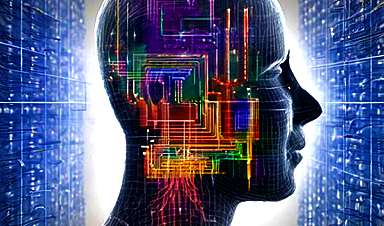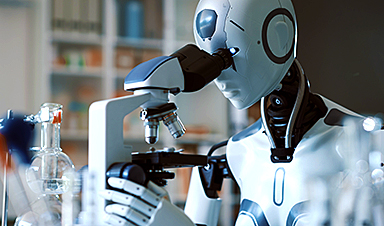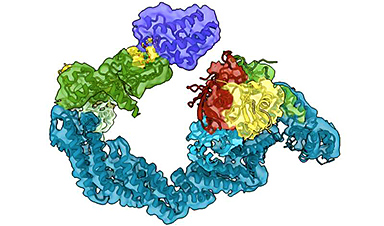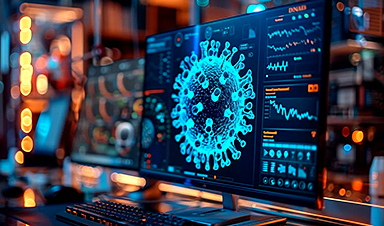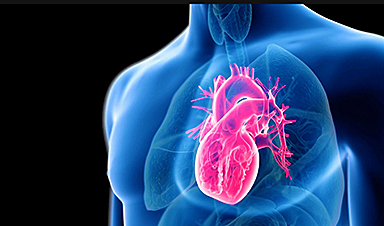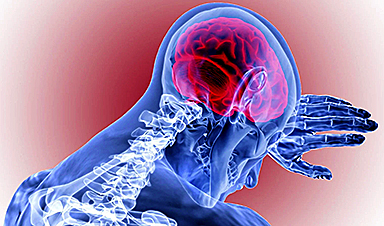KEY POINTS
- Neuralink’s demo introduces “cognitive compartmentalization,” enabling simultaneous cognitive tasks.
- This signifies a potential expansion in human cognitive abilities, enhancing multitasking and creativity.
- Raises concerns about cognitive overload and the merging of physical and digital realities.
- Promises transformative implications for medical treatments and redefines human-machine interaction.
A Multiverse of Thought
Cognitive compartmentalization, as showcased by Arbaugh, is not merely a technological event; it represents a curious evolution of human cognition. It involves the ability to segregate and manage multiple conscious cognitive processes simultaneously, such as articulating thoughts while independently controlling a digital interface through mental commands. And while the multi-tasking of human thought and activity is commonplace, this new capability may suggest a remarkable expansion in our cognitive capacities, potentially heralding a new forefront in human-computer symbiosis and a technological push on the complexity of human capabilities.
But let’s take a cognitive step back. Compartmentalization, in psychological terms, refers to a defense mechanism where individuals mentally separate conflicting thoughts, emotions, or experiences to avoid cognitive dissonance and emotional discomfort. This process allows people to hold contradictory beliefs or emotions by isolating them into distinct compartments within their minds, preventing them from clashing and causing distress. It’s a subconscious effort to maintain mental integrity and emotional equilibrium in the face of conflicting internal or external demands.
On the other hand, the term “cognitive compartmentation,” as I’m presenting in the context of Neuralink’s groundbreaking demonstration, extends beyond this traditional defense mechanism to encompass a deliberate, conscious, and technologically augmented expansion of cognitive processes. This novel and speculative concept describes the ability to consciously manage and operate multiple streams of thought or tasks simultaneously, facilitated by advanced neural implants.
This distinction is pivotal. While traditional compartmentalization serves as a psychological coping strategy to manage internal conflicts and maintain emotional stability, cognitive compartmentation represents an technologically-mediated leap in cognitive capability. It suggests a potential reconfiguration of cognitive architecture, where the brain, augmented by technological interfaces, can engage with and process multiple streams of information simultaneously, akin to running several complex software applications on a computer without compromising the performance of each.
This expansion in cognitive capability through “cognitive compartmentation” challenges our current understanding of the human mind’s limitations and opens up new frontiers in exploring consciousness, multitasking, and the integration of artificial intelligence with human cognitive processes. It propels us into a future where the delineation between human cognition and machine intelligence becomes increasingly blurred, suggesting extraordinary advancements in how we interact with digital environments, solve complex problems, and experience the world around us.
This capacity could fundamentally alter our approach to multitasking, creativity, problem-solving, and even the essence of human experience. From a medical perspective, it offers a beacon of hope for individuals with motor neuron diseases, spinal cord injuries, and other conditions that impair physical capabilities. From a philosophical standpoint, it challenges our understanding of consciousness, free will, and the nature of human-machine interaction.
A Fractured Reality?
While the advent of cognitive compartmentalization may reflect a new perspective on human cognitive capability, it’s important to consider the potential ramifications of such expanded functionality. This proliferation of mental multitasking could usher us into a realm of fractured realities, where the seamless integration of digital interfaces and neural processes might stretch the fabric of our cognitive capacity into uncertain territory.
The human brain, while remarkably adaptable, operates within the confines of evolutionary parameters that have historically been bounded by the tangible world. The introduction of a layer where thoughts directly influence digital actions could lead to a dissonance between our physical reality and the digital realms we interact with. This disjunction might not only challenge our perception of reality but also strain our cognitive resources, leading to a potential overload or diffusion of focus.
Future Thought
From where I stand—as an observer, not a scientist—I see the potential emergence of a “cognitive multiverse” where neural implants and AI partner to expand thought into to a rich and more multifaceted experience. This expansion through cognitive compartmentalization represents a fascinating view into our understanding of human potential. Neuralink’s recent demonstration is not just a testament to technological advancement; it is a portal to a future where the limitations of human cognition may be completely redefined.
News
Scientists Have Discovered Toxic “Forever Chemicals” in Bottled Water
Scientists have found toxic PFAS in drinking water samples from around the world, with higher levels in tap water from China compared to the UK. Boiling water or using a filtration jug can reduce [...]
Urban Microbes Are Eating Disinfectants – Are We Fueling a New Health Threat?
New research reveals that microbes in urban environments are evolving to withstand the very cleaning agents designed to eliminate them. The study also uncovers new strains in Hong Kong, previously only found in the [...]
Startling Study Shows High-Potency Cannabis Alters DNA
The study shows that frequent use of high-potency cannabis alters DNA, affecting genes related to energy and immune function. These changes differ between those with and without psychosis, suggesting cannabis use could influence mental health through biological [...]
New nanotherapy targets artery inflammation in cardiovascular disease
Inflammation of the arteries is a primary precursor and driver of cardiovascular disease—the No. 1 killer of people in the United States. This inflammation is associated with the buildup of dangerous plaque inside the [...]
Revolutionary Nanoparticle Therapy for Prostate Cancer
A groundbreaking research effort involving teams from the University of Virginia, Mount Sinai, the University of Michigan, the University of Texas, and others has displayed the clinical efficacy of an innovative therapy that utilizes nanoparticles and [...]
Antibody engineering drives innovation in drug development
Monoclonal antibodies (mAbs) are used to prevent, detect, and treat a broad spectrum of non-communicable and communicable diseases. Over the past few years, the market for mAbs has grown exponentially with an expected compound [...]
Breakthrough Study Reveals How Bladder Cancer Starts and Spreads
Researchers found that DNA mutations from antiviral enzymes and chemotherapy fuel early bladder cancer, while abnormal circular DNA in tumor cells drives resistance to therapy. These discoveries open new therapeutic avenues. A groundbreaking study led by [...]
AI and Quantum Mechanics Accelerate Drug Discovery
A recent article published in the Journal of Chemical Information and Modeling researchers at Southern Methodist University (SMU) have developed SmartCADD, an open-source virtual tool designed to speed [...]
Targeting ‘undruggable’ diseases: Researchers reveal new levels of detail in targeted protein degradation
Researchers at the University of Dundee have revealed in the greatest detail yet the workings of molecules called protein degraders which can be deployed to combat what have previously been regarded as "undruggable" diseases, [...]
Revolutionizing Virology: AI Discovers Over 160,000 New RNA Viruses
Largest discovery of new virus species sheds light on the hidden virosphere. Artificial intelligence (AI) has been used to reveal details of a diverse and fundamental branch of life living right under our feet and in every [...]
Cardiac Crisis: COVID-19 Doubles Risk of Heart Attacks, Strokes, and Death
Research indicates that COVID-19 survivors face doubled risks of severe cardiac events for years after recovery, especially if hospitalized. People with A, B, or AB blood types are particularly vulnerable, highlighting the need for personalized approaches [...]
AI steps into science limelight with Nobel wins
For long periods of its history, artificial intelligence has lurked in the hinterland of science, often unloved and unfunded—but two Nobel prizes in one week suggest its time in the sunshine has finally arrived. [...]
MIT Scientists Shed New Light on the Critical Brain Connections That Define Consciousness
A new study provides further evidence that consciousness depends on communication between the brain’s sensory and cognitive regions in the cortex. Our brains are constantly making predictions about our surroundings, enabling us to focus [...]
Common Chemicals Found in Shampoo and Plastic Could Be Quietly Disrupting Your Heart’s Rhythm
UC study of Fernald data links environmental phenols to heart toxicities Environmental phenols are present in numerous everyday consumer products, serving as preservatives in packaged foods, parabens in shampoos, and bisphenol A (BPA) in [...]
Revolutionary Brain Tech Offers New Hope for Stroke and Injury Recovery
University of Pittsburgh researchers report that deep brain stimulation (DBS) can effectively enhance motor functions in individuals with arm and hand paralysis due to brain injuries, with promising results from early human and monkey [...]
NIH Scientists Discover Gene Responsible for Rare Eye Disease
Findings supported by the NIH pave the way for the development of genetic testing, clinical trials, and therapies. Researchers at the National Institutes of Health (NIH) and their collaborators have discovered a gene linked to certain [...]
